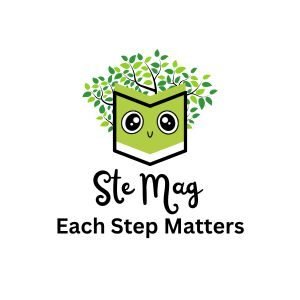Understanding the Topic Particle 는/은 in Korean
Korean is a language rich in nuances and complexities, particularly when it comes to particles. One of the most fundamental particles you will encounter is the topic particle, which is expressed as 는 (neun) and 은 (eun). These particles are essential for indicating the topic or theme of a sentence and are critical for mastering Korean sentence structure. In this article, we will delve into the usage, differences, and examples of the topic particles 는 and 은, helping you gain a deeper understanding of their roles in the Korean language.
What are Topic Particles?
In Korean, particles are suffixes or short words that are attached to nouns to indicate their grammatical function in a sentence. The topic particles 는 and 은 are used to mark the topic of a sentence. The topic is what the sentence is about or the subject of discussion.
- 는 (neun): Used when the noun ends in a vowel.
- 은 (eun): Used when the noun ends in a consonant.
Usage of 는 and 은
The main function of 는 and 은 is to highlight or emphasize the topic of the sentence. This emphasis helps clarify what the speaker is talking about, especially in a language where the subject can sometimes be dropped if it is understood from the context.
1. Noun Ending in a Vowel + 는 (neun)
When the noun ends in a vowel, you attach 는 to the noun.
Examples:
- 나 (na) + 는 = 나는 (naneun) – I
- 이 (i) + 는 = 이는 (ineun) – This
- 친구 (chingu) + 는 = 친구는 (chinguneun) – Friend
Sentence Examples:
- 나는 학생이에요. (Naneun haksaeng-ieyo.) – I am a student.
- 이는 책이에요. (Ineun chaeg-ieyo.) – This is a book.
- 친구는 한국에 있어요. (Chinguneun hanguk-e isseoyo.) – My friend is in Korea.
2. Noun Ending in a Consonant + 은 (eun)
When the noun ends in a consonant, you attach 은 to the noun.
Examples:
- 책 (chaek) + 은 = 책은 (chaekeun) – Book
- 사람 (saram) + 은 = 사람은 (sarameun) – Person
- 집 (jip) + 은 = 집은 (jibeun) – House
Sentence Examples:
- 책은 재미있어요. (Chaekeun jaemiisseoyo.) – The book is interesting.
- 사람은 친절해요. (Sarameun chinjeolhaeyo.) – The person is kind.
- 집은 크다. (Jibeun keuda.) – The house is big.
Differences Between 는/은 and Subject Particles 이/가
While 는/은 are topic particles, 이/가 are subject particles. Understanding the difference between these sets of particles is crucial for forming correct sentences.
- 는/은 (neun/eun): Used to introduce or emphasize the topic of the sentence. It can imply contrast or comparison.
- Example: 저는 학생이에요. (Jeoneun haksaeng-ieyo.) – As for me, I am a student.
- 이/가 (i/ga): Used to indicate the subject of the sentence without any emphasis or contrast.
- Example: 제가 학생이에요. (Jega haksaeng-ieyo.) – I am a student.
Emphasis and Contrast
The topic particles 는 and 은 are often used to contrast or emphasize certain elements within a conversation.
Examples:
- 오늘은 날씨가 좋아요. (Oneureun nalssiga joayo.) – As for today, the weather is nice. (Implying that other days may not be as nice)
- 저는 한국어를 공부해요. (Jeoneun hangugeoreul gongbuhaeyo.) – As for me, I study Korean. (Implying that others might study different subjects)
Practice Exercises
To reinforce your understanding, here are some practice exercises. Choose the correct topic particle (는/은) to complete the sentences:
- 내 친구___ 일본에 있어요. (My friend is in Japan.)
- 고양이___ 귀여워요. (The cat is cute.)
- 오늘___ 날씨가 좋네요. (The weather is nice today.)
- 책___ 너무 비싸요. (The book is too expensive.)
- 저는 학생이에요. 저___ 공부해요. (I am a student. I study.)
Answers:
- 내 친구는 일본에 있어요.
- 고양이는 귀여워요.
- 오늘은 날씨가 좋네요.
- 책은 너무 비싸요.
- 저는 학생이에요. 저는 공부해요.
Conclusion
Mastering the use of 는 and 은 is a fundamental step in learning Korean. These topic particles not only help in forming grammatically correct sentences but also in conveying emphasis and contrast. By understanding when and how to use 는 and 은, you will be able to communicate more clearly and effectively in Korean. Practice regularly, pay attention to the context, and soon you’ll find these particles becoming a natural part of your Korean language skills.
